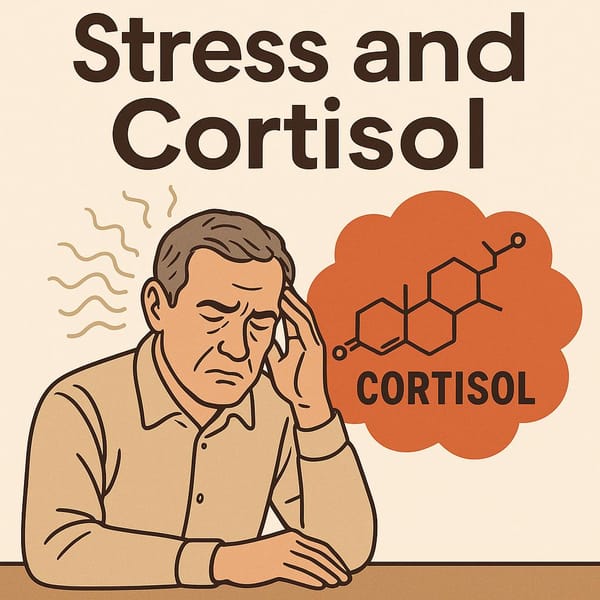The 10 Aging Switches: Transform Your Lifestyle to Live Longer and Reverse Your Biological Clock
Discover the secrets of the “10 Aging Switches” that can help turn back your biological clock, reduce the risk of chronic diseases, and extend your lifespan—backed by scientific research.

For centuries, humans have sought the secret to longevity and ways to reverse aging. In an era where scientific research and technology have advanced dramatically, the idea of “reversing your biological clock” is no longer confined to science fiction. Dr. Mark Hyman, a prominent expert in functional medicine, has introduced the concept of the “10 Aging Switches” to help us understand how our bodies age and how lifestyle modifications can slow or even reverse the aging process.
In this comprehensive article, we’ll explore each of the 10 aging switches one by one, discussing the scientific evidence behind them and outlining practical lifestyle changes that can help maintain optimal cellular function, reduce the risk of chronic diseases, and potentially extend your lifespan—even as your chronological age increases.
Introduction: When Science Meets Lifestyle
Today, we live in an age where science and technology have dramatically expanded our understanding of the human body. The idea of “reversing your biological age” is no longer just a futuristic dream; it is increasingly supported by scientific research and laboratory findings. Many wonder if we can really alter or slow down the aging process. According to Dr. Mark Hyman’s perspective, the answer is “yes.” He proposes that by controlling specific “switches” in our bodies, we can not only prolong our lives but also enjoy a higher quality of life as we age.
Dr. Hyman, known for his innovative work in functional medicine, published his book Young Forever in 2021. Despite being 65 years old, he claims his body’s biological age is closer to that of a 45-year-old. This idea has inspired many to reexamine their lifestyle choices. In the following sections, we will break down each of the 10 aging switches and explain how adjusting your diet, exercise, and daily routines can revitalize your body’s natural ability to repair and maintain itself.
Switch 1: Nutrient Sensing
What It Is and Why It Matters
Nutrient sensing refers to the process by which our bodies detect and respond to the food we consume. When we eat, various nutrients are recognized and processed through key signaling pathways. Some of the most important pathways include mTOR, AMPK, sirtuins, and insulin signaling. These systems help regulate metabolism, energy balance, and cellular repair.
The Science Behind It
Research has shown that high levels of sugar and highly processed foods can disrupt these nutrient-sensing pathways, leading to metabolic imbalances and accelerated aging. For example, both a can of soda and a bagel might spike blood sugar levels in similar ways—even though they come from different food groups. This simplified analogy highlights that the quality of the nutrients matters as much as the quantity.
Practical Lifestyle Tips
To keep your nutrient sensing systems working efficiently:
- Reduce Sugar Intake: Avoid foods and drinks that cause rapid spikes in blood sugar.
- Choose Whole Foods: Focus on vegetables, fruits, lean proteins, and whole grains.
- Emphasize Fiber: A diet rich in fiber helps slow down nutrient absorption and maintains stable blood sugar levels.
By selecting high-quality, minimally processed foods, you help your body accurately sense and utilize nutrients, thereby reducing the risk of metabolic dysfunction and premature aging.
Switch 2: mTOR – The Balance Between Building and Cleaning Cells
Why mTOR Is Critical
mTOR (mechanistic Target of Rapamycin) is a crucial protein that determines whether our cells focus on growth (anabolism) or engage in cleaning and repair (autophagy). When our bodies receive an excess of protein, mTOR remains active, keeping cells in a constant growth mode. This may hinder the necessary process of autophagy—the cellular cleanup process essential for removing damaged components and maintaining cell health.
Scientific Evidence
Numerous studies have shown that exercise and intermittent fasting can modulate mTOR activity. When mTOR is balanced, autophagy is enhanced, which is critical for preventing the buildup of cellular damage that contributes to chronic diseases and aging.
Implementing mTOR Balance in Daily Life
Here are some actionable strategies to regulate mTOR:
- Strength Training: Engage in muscle-strengthening exercises at least three times per week.
- Intermittent Fasting: Practice a fasting window of 12-14 hours daily to allow the body time to initiate autophagy.
- Moderate Protein Intake: Adjust the amount of protein in your meals to ensure that you are neither overloading your system nor depriving it of the nutrients it needs.
By maintaining a proper balance between cellular growth and repair, you support a system that can better manage cellular damage over time.
Switch 3: DNA Repair
The Importance of DNA Maintenance
Every day, our DNA is subjected to an onslaught of damage—estimates suggest up to 100,000 individual events per cell daily. Although our body has intricate mechanisms to repair this damage, even small errors can accumulate, contributing to aging and disease over time.
Boosting DNA Repair Mechanisms
Dr. Hyman suggests several practical methods to stimulate your body’s DNA repair processes:
- Cold Showers: Taking a 3-minute cold shower can help stimulate enzymes involved in DNA repair.
- Sauna Sessions: Spending 20 minutes in a sauna may enhance your body’s repair processes by increasing circulation and promoting detoxification.
- Colorful Fruits and Vegetables: Consuming a variety of fruits and vegetables—aim for at least 10 different types per day—ensures a rich supply of polyphenols, natural antioxidants that combat oxidative stress.
Research Insights
While animal studies have shown that temperature changes can positively impact enzyme activity related to DNA repair, more research in humans is needed. Nonetheless, adopting these practices not only supports cellular repair but also contributes to overall well-being.
Switch 4: Telomere Length
What Are Telomeres?
Telomeres are the protective caps at the ends of chromosomes, analogous to the plastic tips on shoelaces. Every time a cell divides, telomeres shorten, and when they become too short, the cell can no longer divide, leading to aging and an increased risk of disease.
Scientific Evidence on Telomeres
Studies have demonstrated that lifestyle choices can influence telomere length. Activities such as meditation and regular exercise have been associated with reduced telomere shortening. Some research even suggests that stress reduction techniques might help lengthen telomeres by up to 30%—though such findings are based on limited studies and should be interpreted cautiously.
Practical Advice
- Mindfulness and Meditation: Engage in regular mindfulness practices to reduce stress, which is known to accelerate telomere shortening.
- Regular Exercise: Consistent physical activity not only improves cardiovascular health but also appears to have a beneficial effect on telomere length.
- Cautious Use of Supplements: Some advocate for supplements like Astragalus to help preserve telomere length, but the evidence in humans is still emerging. Always consult a healthcare professional before starting any supplement regimen.
Taking care of your telomeres means nurturing both your physical and mental health, a key factor in maintaining youthfulness at the cellular level.
Switch 5: Protein Damage
The Role of Protein Quality in Aging
Proteins are the workhorses of our cells, performing a vast array of functions that keep us alive and well. However, over time, proteins can misfold or undergo glycation (a process where sugar molecules bind to proteins), leading to the formation of toxic aggregates that impair cellular function.
Strategies to Mitigate Protein Damage
Dr. Hyman recommends several ways to reduce protein damage:
- Regular Sauna Use: Exposure to heat from a sauna can help stimulate the mechanisms that prevent protein damage.
- Intermittent Fasting: Fasting for 12-14 hours a day encourages autophagy—a natural recycling process that removes damaged proteins and cellular debris.
- Avoid Processed Foods: Processed foods often contribute to glycation, so reducing their consumption can help maintain protein integrity.
The Science Behind the Approach
Research has shown that interventions like intermittent fasting and regular exercise can promote autophagy, thereby reducing the accumulation of damaged proteins. Although further research is needed in human populations, these lifestyle changes are promising strategies to support overall cellular health and longevity.
Switch 6: Epigenetics
Understanding Epigenetics
Epigenetics involves the study of chemical modifications to DNA that regulate gene expression without changing the underlying genetic sequence. These “epigenetic marks” can be influenced by a variety of factors including diet, exercise, stress, and environmental exposures.
Scientific Findings
Several studies have shown that lifestyle modifications—such as improved diet, regular exercise, and adequate sleep—can lead to favorable changes in epigenetic markers. Some research suggests that these changes can “rejuvenate” the body’s biological age by a few years over short periods (for instance, in 8-week interventions). However, claims of reducing biological age by as much as 20 years are likely exaggerated and should be taken with caution.
Practical Recommendations
- Healthy Diet: Emphasize whole, unprocessed foods rich in antioxidants.
- Regular Exercise: Incorporate both aerobic and strength training exercises to promote healthy epigenetic modifications.
- Good Sleep Hygiene: Ensure you get adequate, quality sleep to support your body’s natural repair processes.
Epigenetics underscores the powerful role our lifestyle choices play in determining how we age, reinforcing that we are not merely at the mercy of our genetic code.
Switch 7: Zombie Cells
What Are Zombie Cells?
“Zombie cells,” or senescent cells, are cells that have lost the ability to divide and perform their normal functions. Rather than dying naturally, these cells linger and secrete inflammatory molecules, contributing to chronic inflammation and the progression of age-related diseases such as arthritis and Alzheimer’s disease.
Eliminating Zombie Cells
One promising strategy for combating aging is the use of senolytic compounds—agents that help clear out these dysfunctional cells. Dr. Hyman suggests natural senolytics like:
- Fisetin: A flavonoid found in strawberries, known to help clear senescent cells.
- Quercetin: A bioflavonoid present in apples and other fruits that has similar senolytic properties.
Current Research Status
While animal studies have produced encouraging results, the application of senolytics in humans is still experimental. Researchers continue to explore these compounds in clinical trials, and while the early data are promising, more evidence is needed before definitive conclusions can be drawn.
Switch 8: Mitochondria – The Powerhouses of the Cell
Why Mitochondrial Health Matters
Mitochondria are essential organelles responsible for producing ATP, the primary energy currency of the cell. When mitochondrial function declines, you may experience fatigue, reduced metabolism, and accelerated aging. Maintaining healthy mitochondria is key to preserving energy levels and overall vitality.
Boosting Mitochondrial Function
Dr. Hyman offers several tips for optimizing mitochondrial health:
- HIIT Workouts: High-intensity interval training (HIIT) has been shown to stimulate mitochondrial biogenesis—the creation of new mitochondria.
- Strength Training: Regular resistance exercises, done at least three times per week, can also improve mitochondrial function.
- Sunlight and Red Light Therapy: Moderate exposure to sunlight or using red light therapy can enhance mitochondrial performance, possibly through improved circulation and energy production.
- CoQ10 Supplementation: Coenzyme Q10 is a naturally occurring antioxidant that plays a role in mitochondrial energy production. Supplementing with CoQ10 may help support mitochondrial function, though individual results can vary.
Research Backing
Numerous studies support the idea that physical exercise, particularly HIIT and strength training, can enhance mitochondrial function. Research on red light therapy and CoQ10 supplementation is still evolving, but these interventions show potential for further improving energy production at the cellular level.
Switch 9: Gut Health
The Gut Microbiome’s Role in Aging
The health of your gut is not just about digestion—it also plays a crucial role in regulating your immune system, controlling inflammation, and even influencing the aging process at the cellular level. Hippocrates famously said, “All disease begins in the gut,” and modern research has confirmed that a balanced gut microbiome is integral to overall health.
Strategies to Improve Gut Health
- Dietary Changes: Reducing foods that trigger inflammation (such as gluten and, for some people, dairy) can help maintain a healthy gut.
- Probiotics and Polyphenols: Eating foods rich in probiotics (like yogurt, kefir, and fermented vegetables) and polyphenols (found in berries, green tea, and dark chocolate) supports a robust and diverse microbiome.
- Bone Broth: Although evidence in humans is still emerging, bone broth is believed by some to nourish the gut lining and support overall gut health.
- Meal Timing: Structured meal timing helps optimize digestion and reduce stress on the gut.
Current Understanding
Emerging research confirms that a healthy gut can reduce chronic inflammation and even slow down some aspects of cellular aging. However, more clinical studies are needed to firmly establish the benefits of some of these interventions, such as bone broth, in the context of human health.
Switch 10: Inflammaging
Understanding Inflammaging
“Inflammaging” is a term that combines “inflammation” and “aging.” It describes the chronic, low-grade inflammation that tends to develop as we age and which fuels many age-related diseases, from heart disease to arthritis and neurodegenerative disorders.
Reducing Chronic Inflammation
To combat inflammaging, lifestyle modifications are key:
- Regular Exercise: Consistent physical activity not only reduces stress but also helps lower systemic inflammation.
- Quality Sleep: Adequate and restful sleep gives your body the time it needs to repair itself, reducing inflammatory markers.
- Anti-Inflammatory Diet: Consuming a diet rich in anti-inflammatory foods—such as fresh vegetables, fruits, nuts, and fatty fish—can help combat chronic inflammation.
Points to Consider
While reducing inflammation is an essential strategy for healthier aging, the causes of chronic inflammation are multifactorial. Addressing inflammation may require a holistic approach that includes both lifestyle changes and, in some cases, medical intervention.
Final Thoughts: A Path to Longevity
Overall, Dr. Mark Hyman’s “10 Aging Switches” present an intriguing framework that merges scientific evidence with actionable lifestyle strategies. Each switch—whether it pertains to nutrient sensing, DNA repair, telomere length, or gut health—offers a unique insight into how we might influence our aging process. Though some recommendations still require further validation in human studies, they provide a strong foundation for those interested in enhancing longevity and quality of life.
Key Takeaways for Daily Life
- Optimize Your Nutrition: Focus on high-quality foods, lower your sugar intake, and incorporate plenty of fiber-rich fruits and vegetables to keep your nutrient-sensing pathways functioning optimally.
- Exercise Regularly: Whether through HIIT, strength training, or moderate aerobic activities, regular exercise is essential for cellular repair, mitochondrial health, and overall vitality.
- Manage Stress: Engage in mindfulness practices such as meditation or deep breathing exercises. These not only reduce stress but also support telomere integrity and beneficial epigenetic changes.
- Embrace Intermittent Fasting: Allowing your body periodic breaks from food can trigger autophagy—a crucial process for cleaning out damaged cells and proteins.
- Support Gut Health: Maintain a diverse and balanced gut microbiome by eating probiotic-rich and anti-inflammatory foods while avoiding processed items that disrupt gut flora.
- Stay Informed: As research evolves, it is important to keep up with the latest findings on these aging mechanisms. Consulting healthcare professionals can help tailor these strategies to your personal needs.
A Look to the Future
In the coming years, further scientific discoveries may refine these strategies and lead to more personalized approaches to slowing aging and preventing age-related diseases. Advances in molecular biology, regenerative medicine, and nutritional science are continually reshaping our understanding of what it means to age gracefully. With this growing body of research, integrating the “10 Aging Switches” into your life could become a cornerstone of a proactive, holistic approach to health.
Embracing Change for a Healthier Future
Aging is not solely determined by genetics or fate—it is also the result of daily choices. From the food you eat to the way you manage stress, every decision can impact your body’s aging process. The “10 Aging Switches” remind us that even small, consistent changes can have profound long-term effects. Whether you are just beginning your health journey or seeking to fine-tune your current regimen, these switches offer practical guidelines to help you live a longer, more vibrant life.
How to Implement the 10 Aging Switches in Your Life
Transitioning to a healthier lifestyle is not an overnight transformation. It requires planning, commitment, and sometimes guidance from professionals. Here’s a step-by-step approach to incorporating these concepts into your daily routine:
1. Assess Your Health Status
Begin by undergoing a comprehensive health check-up. Work with your doctor to understand your current health metrics and identify any areas that need improvement. This baseline information will help you tailor the 10 aging switches to your specific needs.
2. Revamp Your Diet
- Cut Back on Processed Foods: Eliminate or reduce foods that contain high amounts of added sugars and refined carbohydrates.
- Focus on Whole Foods: Integrate a variety of vegetables, fruits, lean proteins, and whole grains into your meals.
- Mind Your Macronutrients: Balance your intake of carbohydrates, proteins, and fats. This helps regulate nutrient-sensing pathways like mTOR and insulin signaling.
- Experiment with Meal Timing: Consider trying intermittent fasting or time-restricted eating to boost autophagy and improve metabolic health.
3. Create an Exercise Routine
Design an exercise plan that includes:
- Strength Training: Aim for at least three sessions per week to build muscle and support mitochondrial function.
- HIIT Sessions: Incorporate high-intensity interval training to stimulate the production of new mitochondria.
- Low-Intensity Activities: Balance high-intensity workouts with activities like walking or yoga to manage stress and promote recovery.
4. Manage Stress and Prioritize Sleep
- Stress Reduction Techniques: Adopt practices such as meditation, mindfulness, or even light stretching to reduce stress levels.
- Quality Sleep: Establish a consistent sleep schedule and create a restful environment that promotes deep, restorative sleep.
5. Optimize Environmental Exposures
- Temperature Therapy: Experiment with alternating between hot (sauna) and cold (cool showers) therapies to boost DNA repair and cellular regeneration.
- Light Therapy: Get moderate sun exposure or consider red light therapy sessions to help stimulate energy production at the cellular level.
6. Monitor Your Progress
Keep track of your progress by periodically checking in with your healthcare provider. Adjust your regimen based on how your body responds over time. Document changes in your energy levels, sleep quality, and overall well-being as you implement these strategies.
The Broader Implications of the 10 Aging Switches
The concept behind the 10 Aging Switches is not merely about adding years to your life—it’s about adding life to your years. By making informed choices and adapting evidence-based practices, you can significantly influence how you age. Here are some broader implications of embracing this approach:
- Prevention of Chronic Diseases: Many chronic illnesses, such as diabetes, cardiovascular disease, and neurodegenerative disorders, are linked to cellular aging. Interventions that slow cellular aging can reduce the risk of these conditions.
- Improved Cognitive Function: A healthy lifestyle that includes proper nutrition, exercise, and stress management has been linked to better cognitive function and may delay the onset of age-related cognitive decline.
- Enhanced Quality of Life: Beyond the sheer number of years lived, the quality of those years is essential. A proactive approach to health can lead to a more active, fulfilling, and independent life as you age.
- Empowerment Through Knowledge: Understanding the science behind aging empowers you to take control of your health. It shifts the focus from merely treating symptoms to actively preventing the decline associated with aging.
Conclusion: Investing in Your Future
The journey toward longevity and rejuvenation starts with small, deliberate changes. Dr. Mark Hyman’s “10 Aging Switches” provide a framework for understanding how everyday decisions—from what you eat to how you exercise—affect your body at the cellular level. While some aspects of these recommendations are still being explored in clinical studies, the overall message is clear: by embracing a lifestyle that supports cellular repair, balances metabolic pathways, and reduces chronic inflammation, you can dramatically improve your quality of life.
Final Reflections
Aging is an inevitable process, but it doesn’t mean that we have to accept a life of decline and diminished quality. By integrating these 10 switches into your daily routine, you take proactive steps toward a healthier, more vibrant future. Whether it’s through better nutrition, consistent exercise, or mindful stress management, every positive change is an investment in your long-term health.
Remember that every journey begins with a single step. Even modest lifestyle adjustments can accumulate over time, resulting in profound improvements in your overall health and well-being. The path to longevity is paved with daily choices—make them count.
Thank you for reading this in-depth exploration of the 10 Aging Switches. I hope this article inspires you to take charge of your health, make informed lifestyle changes, and ultimately, live a longer and more fulfilling life. If you have any questions, comments, or experiences to share, feel free to leave your thoughts in the comments below. Let’s continue this journey toward better health together!
Disclaimer: The ideas presented in this article are based on the work of Dr. Mark Hyman and current scientific research. Some recommendations are still undergoing investigation, and individual results may vary. Always consult with a healthcare professional before making significant changes to your diet or exercise routine.
By embracing the principles outlined in the 10 Aging Switches, you have the power to transform your life. Take that first step today and invest in a healthier, more vibrant tomorrow. Enjoy the journey to a longer, more active life, and remember: every small change brings you closer to the best version of yourself.
End of Article
This English version retains the comprehensive nature of the original blog post while ensuring that the information is accessible and engaging for an international audience. Enjoy reading, and may your journey to a healthier life be rewarding!



